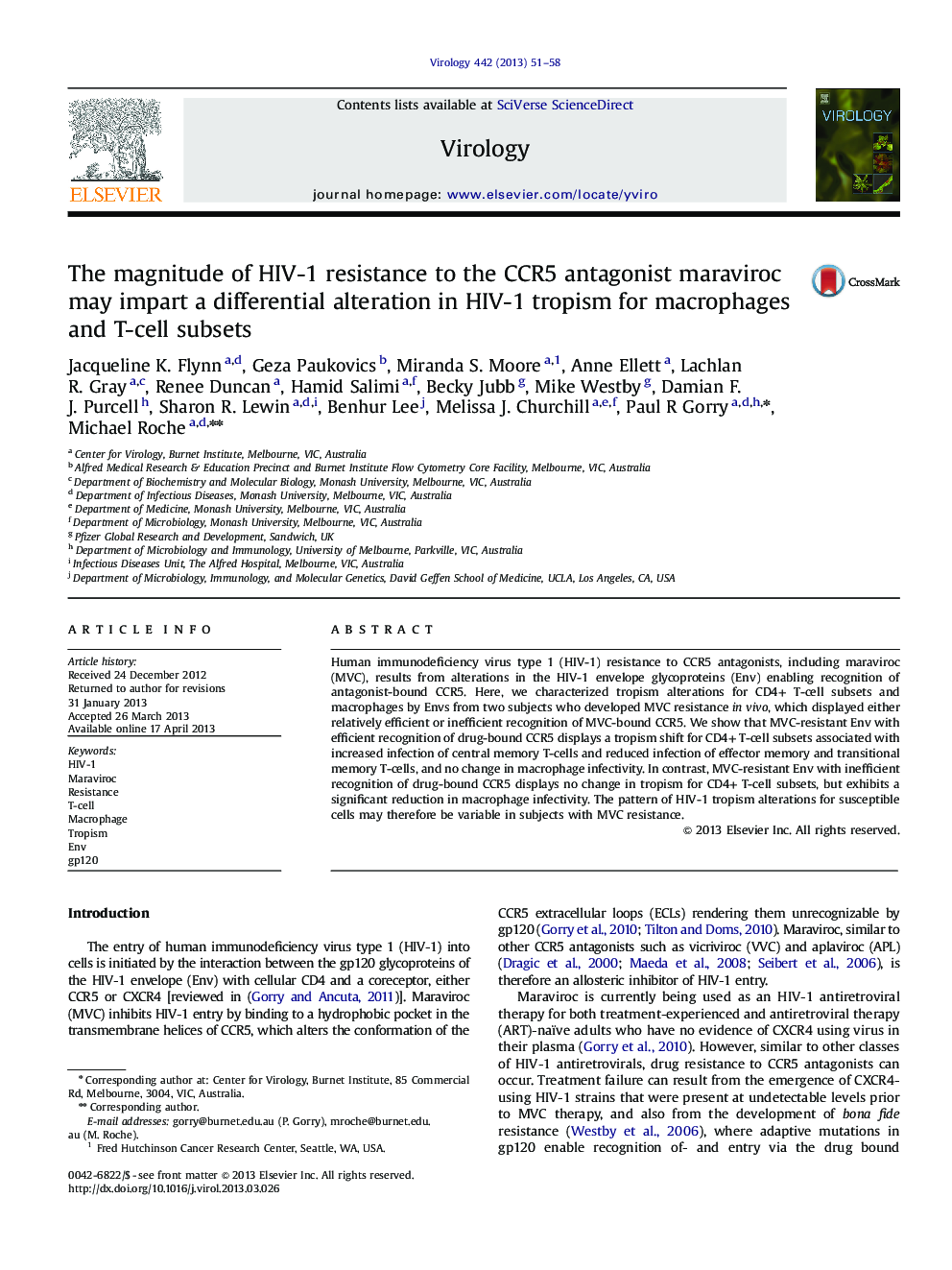| Article ID | Journal | Published Year | Pages | File Type |
|---|---|---|---|---|
| 3424063 | Virology | 2013 | 8 Pages |
•We characterized resistance to maraviroc (MVC) in 2 subjects failing therapy•Resistance was diverse, with comparatively weak and strong resistance shown•Strong resistance was associated with expansion of HIV-1 infected CM T-cells•Weak resistance was associated with protection of macrophage infection•Cell tropism alterations can vary depending on the magnitude of MVC resistance
Human immunodeficiency virus type 1 (HIV-1) resistance to CCR5 antagonists, including maraviroc (MVC), results from alterations in the HIV-1 envelope glycoproteins (Env) enabling recognition of antagonist-bound CCR5. Here, we characterized tropism alterations for CD4+ T-cell subsets and macrophages by Envs from two subjects who developed MVC resistance in vivo, which displayed either relatively efficient or inefficient recognition of MVC-bound CCR5. We show that MVC-resistant Env with efficient recognition of drug-bound CCR5 displays a tropism shift for CD4+ T-cell subsets associated with increased infection of central memory T-cells and reduced infection of effector memory and transitional memory T-cells, and no change in macrophage infectivity. In contrast, MVC-resistant Env with inefficient recognition of drug-bound CCR5 displays no change in tropism for CD4+ T-cell subsets, but exhibits a significant reduction in macrophage infectivity. The pattern of HIV-1 tropism alterations for susceptible cells may therefore be variable in subjects with MVC resistance.
